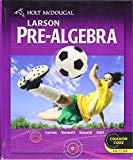Five hundred consumers were surveyed about a new brand of snack food, Crunchicles. Their age groups and preferences are given in the table. 18–24 25–34 35–55 55 and over Total Liked Crunchicles 1 3 2 5 11 Disliked Crunchicles 36 77 56 70 239 No Preference 68 6 10 166 250 Total 105 86 68 241 500 One consumer from the survey is selected at random. Use reduced fractions for your responses to each of the following questions. What is the probability that the consumer is 18–24 years of age, given that he/she dislikes Crunchicles? 36239 What is the probability that the selected consumer dislikes Crunchicles? What is the probability that the selected consumer is 35–55 years old or likes Crunchicles? If the selected consumer is 70 years old, what is the probability that he/she likes Crunchicles?
Five hundred consumers were surveyed about a new brand of snack food, Crunchicles. Their age groups and preferences are given in the table. 18–24 25–34 35–55 55 and over Total Liked Crunchicles 1 3 2 5 11 Disliked Crunchicles 36 77 56 70 239 No Preference 68 6 10 166 250 Total 105 86 68 241 500 One consumer from the survey is selected at random. Use reduced fractions for your responses to each of the following questions. What is the probability that the consumer is 18–24 years of age, given that he/she dislikes Crunchicles? 36239 What is the probability that the selected consumer dislikes Crunchicles? What is the probability that the selected consumer is 35–55 years old or likes Crunchicles? If the selected consumer is 70 years old, what is the probability that he/she likes Crunchicles?
Holt Mcdougal Larson Pre-algebra: Student Edition 2012
1st Edition
ISBN:9780547587776
Author:HOLT MCDOUGAL
Publisher:HOLT MCDOUGAL
Chapter11: Data Analysis And Probability
Section11.4: Collecting Data
Problem 6E
Related questions
Question
Five hundred consumers were surveyed about a new brand of snack food, Crunchicles. Their age groups and preferences are given in the table.
| 18–24 | 25–34 | 35–55 | 55 and over | Total | |
|---|---|---|---|---|---|
| Liked Crunchicles | 1 | 3 | 2 | 5 | 11 |
| Disliked Crunchicles | 36 | 77 | 56 | 70 | 239 |
| No Preference | 68 | 6 | 10 | 166 | 250 |
| Total | 105 | 86 | 68 | 241 | 500 |
One consumer from the survey is selected at random. Use reduced fractions for your responses to each of the following questions.
What is the
36239
What is the probability that the selected consumer dislikes Crunchicles?
What is the probability that the selected consumer is 35–55 years old or likes Crunchicles?
If the selected consumer is 70 years old, what is the probability that he/she likes Crunchicles?
Expert Solution
This question has been solved!
Explore an expertly crafted, step-by-step solution for a thorough understanding of key concepts.
This is a popular solution!
Trending now
This is a popular solution!
Step by step
Solved in 4 steps with 7 images

Knowledge Booster
Learn more about
Need a deep-dive on the concept behind this application? Look no further. Learn more about this topic, statistics and related others by exploring similar questions and additional content below.Recommended textbooks for you

Holt Mcdougal Larson Pre-algebra: Student Edition…
Algebra
ISBN:
9780547587776
Author:
HOLT MCDOUGAL
Publisher:
HOLT MCDOUGAL

Holt Mcdougal Larson Pre-algebra: Student Edition…
Algebra
ISBN:
9780547587776
Author:
HOLT MCDOUGAL
Publisher:
HOLT MCDOUGAL